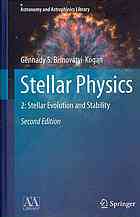

Most ebook files are in PDF format, so you can easily read them using various software such as Foxit Reader or directly on the Google Chrome browser.
Some ebook files are released by publishers in other formats such as .awz, .mobi, .epub, .fb2, etc. You may need to install specific software to read these formats on mobile/PC, such as Calibre.
Please read the tutorial at this link: https://ebookbell.com/faq
We offer FREE conversion to the popular formats you request; however, this may take some time. Therefore, right after payment, please email us, and we will try to provide the service as quickly as possible.
For some exceptional file formats or broken links (if any), please refrain from opening any disputes. Instead, email us first, and we will try to assist within a maximum of 6 hours.
EbookBell Team

4.1
10 reviews"Stellar Physics" is a an outstanding book in the growing body of literature on star formation and evolution. Not only does the author, a leading expert in the field, very thoroughly present the current state of knowledge on stellar physics, but he handles with equal care the many problems that this field of research still faces. A bibliography with well over 1000 entries makes this book an unparalleled reference source.
"Stellar Evolution and Stability" is the second of two volumes and can be read, as can the first volume "Fundamental Concepts and Stellar Equilibrium," as a largely independent work. It traces in great detail the evolution of protostars towards the main sequence and beyond this to the last stage of stellar evolution, with the corresponding vast range from white dwarfs to supernovae explosions, gamma-ray bursts and black hole formation. The book concludes with special chapters on the dynamical, thermal and pulsing stability of stars.
This second edition is carefully updated in the areas of pre-supernova models, magnetorotational supernovae, and the theory of accretion disks around black holes. Additional sections have been added on strange quark stars, jet formation and collimation, radiation-driven winds in strong gravitational fields and gamma-ray bursts.
From the reviews of the first edition:
"I heartily recommend the book for researchers in the field." (Robert Deupree, PHYSICS TODAY, Feb. 2003)